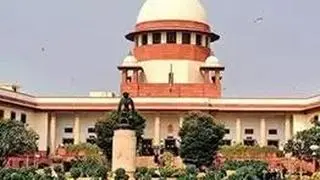The most visible difference between the 2014 and 2019 manifestoes of the Bhartiya Janata Party is on the cover of the documents. The 2014 manifesto was about a team of stalwarts while the current one is all about Prime minister Narendra Modi. (See picture) Predictably, as the tone of the party’s campaign in the run up to the elections suggested, there is more nationalistic overtones in the document, about national security, dealing with terrorism, preventing illegal immigration in the north-eastern states.
Its stand on Jammu and Kashmir has not undergone change since the last manifesto, the party remains committed to the abrogation of Article 370 of the Constitution and annulling Article 35A as it is discriminatory against non-permanent residents and women of Jammu and Kashmir.
There are not many new ideas on promoting growth, reducing poverty, rural distress, creating jobs but there are some specific targets mentioned, given that it is currently in the driver’s seat. The document is based on five commitments or Panch Nishtha and these are inclusive development, good governance, national security, promotion of our cultural heritage at a global level and continuance of a multi-dimensional progress.
The 2019 manifesto is based on the premise that the party will return to power and therefore continue with the implementation of the programmes announced over the past five years. So, while the 2014 manifesto had committed to implementing goods and services tax, the current one promises further simplification of the tax. The 2014 manifesto promised to rationalise and simplify taxes and reduce tax terrorism, the 2019 document promises to continue lowering of tax rate thereby rewarding honest tax payers and improving compliance. The BJP government had committed in the interim budget to bring down tax liability of individual taxpayers.
On growth and the economy, the party said that it aspires to make India the third largest economy of the world by 2030 – that is make $5 trillion economy by 2025 and $10 trillion economy by 2032. In the manifesto for 2014 elections, the party had said that it would spur economic growth through consistent and long-term policies, and also allocate resources efficiently and effectively to re-energise the engines of growth. However, it had not given any specific target then.
The party had, in the 2014 manifesto, proposed to make India a manufacturing hub and had promised to create a conducive, enabling environment such that 'doing business' in India easy. It has also said that it would focus on cutting the red tape, simplifying the procedures and removing the bottlenecks. In the current manifesto, it has said that it will work to ensure India is among the top 50 countries on the World Bank's Ease of Doing Business Index.
The party has said that it remains committed to women's welfare and development as also to 33% reservation for women in Parliament and state Assemblies through a constitutional amendment in the 2014 and 2019 manifestos.








Comments
Comments have to be in English, and in full sentences. They cannot be abusive or personal. Please abide by our community guidelines for posting your comments.
We have migrated to a new commenting platform. If you are already a registered user of TheHindu Businessline and logged in, you may continue to engage with our articles. If you do not have an account please register and login to post comments. Users can access their older comments by logging into their accounts on Vuukle.